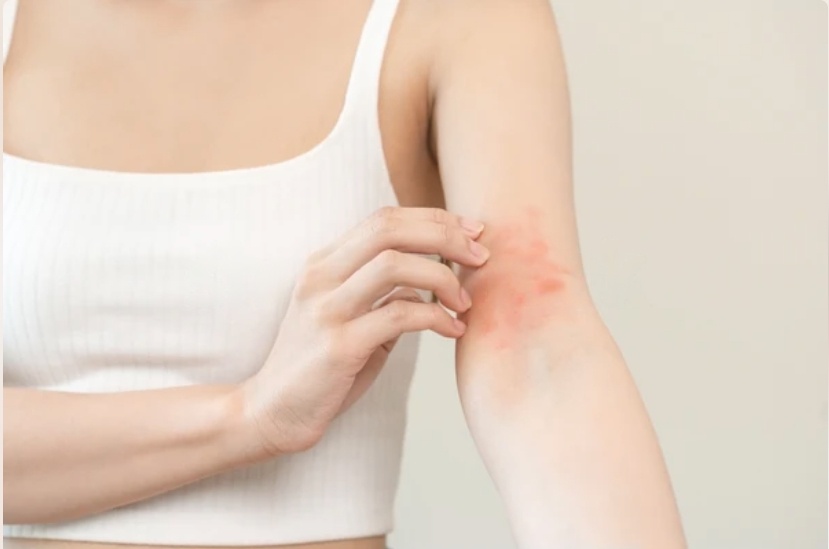Introduction
Seborrheic Dermatitis is a common skin condition that affects many adults worldwide. Understanding its symptoms, causes, and treatment options is crucial for those who suffer from it. This comprehensive guide aims to provide insights into effectively managing and treating Seborrheic Dermatitis.
What is Seborrheic Dermatitis?
Seborrheic dermatitis is a common skin condition that mainly affects your scalp. It causes scaly patches, red skin, and stubborn dandruff. Seborrheic dermatitis can also affect oily areas of the body, such as the face, sides of the nose, eyebrows, ears, eyelids, and chest.
The exact cause of seborrheic dermatitis is unknown, although a yeast (fungus) called Malassezia may play a role. Factors like stress, cold, dry weather, and certain medical conditions can also contribute to the development of this condition.
Symptoms of Seborrheic Dermatitis
Seborrheic Dermatitis is a common skin condition that mainly affects your scalp, but it can also occur in other areas rich in oil-producing glands, like your face and upper body. Here are the typical symptoms:
- Skin Flakes (Dandruff): White or yellow scales that may attach to the hair shaft.
- Red Skin: Commonly affected areas include the scalp, hairline, forehead, eyebrows, eyelids, creases of the nose, lips, behind the ears, and middle part of the chest.
- Itching: Varying degrees of itching can be more severe in some cases.
- Skin Lesions: Patches of greasy skin covered with flaky white or yellow scales or crust on the scalp, face, sides of the nose, eyebrows, ears, eyelids, and chest.
- Rash: In some cases, seborrheic dermatitis can cause a rash on other body parts, such as the groin and under the breasts.
- Redness: Areas affected by seborrheic dermatitis may appear red and inflamed.
- Oily Skin: Affected areas may appear oily due to excessive sebum production.
Causes of Seborrheic Dermatitis
Seborrheic dermatitis is a common skin condition that mainly affects your scalp, causing scaly patches, red skin, and stubborn dandruff. However, it can also affect oily areas of the body, such as the face, sides of the nose, eyebrows, ears, eyelids, and chest. The exact cause of seborrheic dermatitis is not fully understood, but several factors are believed to play a role:
- Yeast (Malassezia) that lives on the skin: Everyone has this yeast, but in some people, it may cause an inflammatory reaction that leads to seborrheic dermatitis. The yeast thrives in oily areas, which might explain why this condition often affects these skin regions.
- Genetic Factors: Evidence suggests genetics play a role in susceptibility to seborrheic dermatitis. If family members have the condition, you may also be more likely to develop it.
- Oily Skin: Excess oil production in the skin can contribute to seborrheic dermatitis. This could be due to hormonal changes, the use of certain medications, or other factors affecting skin oil production.
- Stress and Emotional Factors: Stress and emotional states can exacerbate seborrheic dermatitis. While they are not direct causes, they can trigger or worsen the condition in susceptible individuals.
- Medical Conditions: Certain medical conditions, such as HIV/AIDS, Parkinson's disease, and some other immune system disorders, have been associated with a higher incidence of seborrheic dermatitis.
- Cold, Dry Weather: In some people, seborrheic dermatitis worsens in cold, dry weather, possibly due to changes in the skin barrier function or other environmental factors.
- Medications and Health Conditions: Some medicines and health conditions can exacerbate or trigger seborrheic dermatitis. For instance, drugs that affect the immune system and conditions like rosacea, acne, or psoriasis may increase the risk of developing this skin disorder.
Impact on Quality of Life
Beyond physical discomfort, Seborrheic Dermatitis can cause psychological distress and affect social interactions due to its visible symptoms.
Diagnosis of Seborrheic Dermatitis
Diagnosis typically involves a medical evaluation, including a review of symptoms and medical history. Sometimes, a biopsy may be necessary to differentiate it from other skin conditions.
Home Remedies for Seborrheic Dermatitis
Natural remedies include using oils like coconut or tea tree oil and lifestyle changes such as stress reduction and improved sleep.
Medical Treatments
Topical treatments like medicated shampoos and creams are common. Systemic therapies, including oral medications, may be prescribed in severe cases.
Diet and Seborrheic Dermatitis
A balanced diet rich in anti-inflammatory foods can help manage symptoms. It's advisable to avoid foods that can trigger inflammation.
Preventing Seborrheic Dermatitis Flare-Ups
Maintaining a regular skincare routine and controlling environmental factors like humidity can help prevent flare-ups.
Seborrheic Dermatitis in Different Seasons
Seasonal changes can affect the condition. Special care is needed to manage symptoms during extreme weather conditions.
Alternative Therapies
Some find relief through herbal remedies, acupuncture, and acupressure, although these should be complementary.
When to See a Doctor
Seek medical attention if signs of infection appear or there's no improvement despite home care.
Living with Seborrheic Dermatitis
Effective daily management and understanding the chronic nature of the condition are crucial to living comfortably with Seborrheic Dermatitis.
Conclusion
Seborrheic Dermatitis, though a chronic condition, can be managed with the right combination of treatments and lifestyle adjustments. Understanding the condition is the first step towards effective management.
FAQs
- Can diet affect Seborrheic Dermatitis?
- Certain foods can exacerbate symptoms, while others can help reduce inflammation.
- Are there any natural remedies for Seborrheic Dermatitis?
- Natural oils and lifestyle changes can be effective in managing mild symptoms.
- How can I prevent Seborrheic Dermatitis flare-ups?
- Regular skin care, stress management, and avoiding known triggers can help.
- Is Seborrheic Dermatitis contagious?
- No, it is not infectious and cannot be spread from person to person.
- Can Seborrheic Dermatitis be cured?
- While there's no cure, symptoms can be effectively managed with proper treatment.


No comments yet